Chiropractic Care Can Help With Headaches
Left unchecked, headaches can take over of your life. Get that control back, call us today to find out how chiropractic care can help with your headaches.
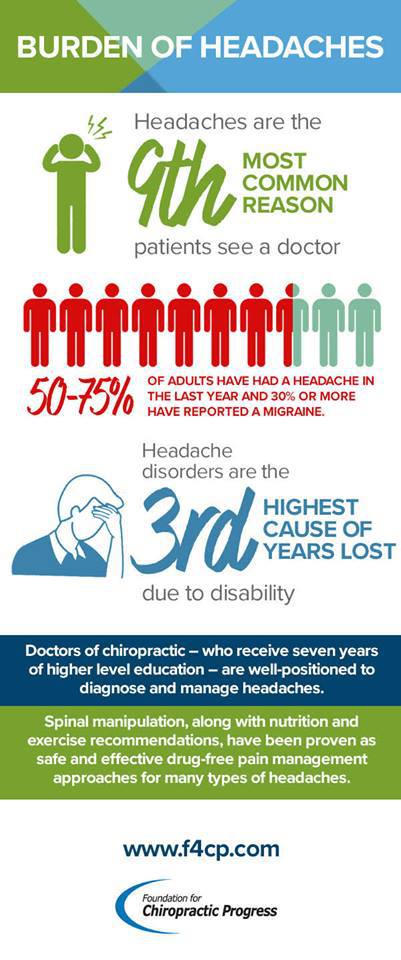
Causes and Treatment of Headaches
Houston Chiropractor Comments: Few conditions leave their victims as miserable and agitated as headaches. There are many causes of headaches including stress, odors, bright lights, noise, fatigue, certain foods, hormonal shifts, allergies, as well as genetic predisposition. With all the possible causes of headaches, it’s not surprising many people seek help from many different approaches such as conventional medical therapies like pharmaceuticals and injections. Others prefer a non-drug treatment approach such as chiropractic, massage therapy, acupuncture, and nutritional counseling.
Usually, there is not one specific cause of headaches so headache treatment can focus on various areas. For example, muscles that attach to the base of the skull in the neck and upper back are often very short and tight, resulting in pressure or a squeezing effect on the surrounding nerves and blood vessels — resulting in headaches. Chiropractic treatment includes methods aimed at reducing the tightness found in the joints and muscles. One of these approaches is called spinal manipulation or “adjustments” where the joints in the neck are moved to restore motion and reduce joint fixations. By relaxing the muscles and tension between the joints, the nerves in the neck are less pressured which, in turn, can reduce headaches. The top three nerves that exit the upper neck travel into the head and are often the culprit behind the onset of headaches. The second nerve from the top is the one responsible for causing radiating pain over the top of the skull which communicates with other nerves sometimes causing the pain behind the eye.
Another chiropractic approach in the management of headaches includes soft tissue therapy where trigger points found in tight muscles are addressed through various forms of massage and mobilization methods. Manual traction of the head and neck can also be highly effective in reducing the tension found in headache sufferers. Exercises are often taught to the headache patient with significant benefits reported. Some of these, such as range of motion exercises with and without resistance (example: pushing your head into your hand during neck movements) and posture re-training (chin tucks – reducing the forward head position), help address the limited motion problems of the neck. Cervical (neck) traction performed by placing a rolled up towel placed behind the neck while lying on the back so that the head can hang off the side of the bed can also be very helpful. This can be of great benefit as it can be performed at home at your convenience multiple times a day or, as needed.
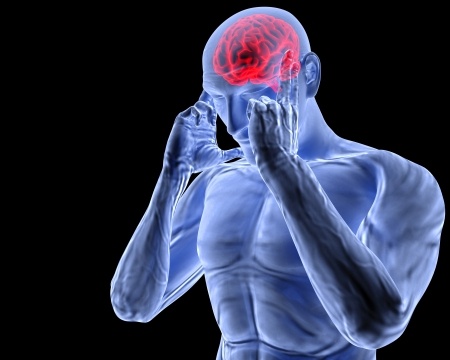
Other treatment approaches that chiropractic utilizes include stress management (such as biofeedback, relaxation instructions, meditation, visualization and others), diet modifications (as certain foods can trigger headaches), nutritional supplementation (such as fish oil, Vit. D, feverfew and others), and sleep restoration.
If you, a family member or a friend require care, we sincerely appreciate the trust and confidence shown by choosing our service. We are proud that chiropractic care has consistently scored the highest level of satisfaction when compared to other forms of health care provision and we look forward in serving you and your family presently and in the future.
Dr. Ward Beecher practices at Beecher Chiropractic Clinic at 1001 Pineloch, Ste 700 Houston, TX 77062. You can schedule an appointment at BeecherChiropractic.com or by calling (281) 286-1300. If you have any questions regarding this blog, please comment below!
Types of Headaches
Clear Lake Chiropractor Comments: Headaches are one of the most common complaints for which patients seek chiropractic care. Chiropractic is especially helpful in the treatment of headaches because the three nerves that exit the top of the spine (upper neck) are often the cause of or directly related to headaches. These three nerves travel into the head and have to pass through a very thick group of muscles in the upper part of the neck near where these muscles attach to the base of the skull. This is why when you have headaches and rub the back of the neck, the muscles may feel tight and or tender. In fact, if enough pressure is applied over one of these three nerves, pain will radiate into the head following the course of the nerve, sometimes all the way into the eyes. When chiropractic headache treatment is applied in the upper neck region, a reduction of the headache and neck pain occurs because the muscle tension is decreased and joint motion is restored.
The International Headache Society (IHS) has classified headaches into two main categories, primary and secondary. Primary headaches occur for no known reason and there are four groups of these: 1) migraine, 2) tension-type, 3) cluster, and 4) “other” primary headaches. Secondary headaches are those with a specific cause such as sinus/allergy headaches, those associated with eye strain, a known medical condition or those due to cold or flu. Both migraine and cluster headaches are “vascular” (related to the blood vessels expanding inside the head) resulting in a unique set of symptoms that includes nausea, vomiting, pounding/throbbing and can be quite debilitating.
The most common type is the tension-type of headache. A thorough history is necessary because there is no specific diagnostic test (lab or blood test) for tension-type headaches. Hence, the concept is to make sure the headache is not related to some other condition that is diagnosable by a blood or lab test and if present, having that condition properly managed. So, assuming all the tests come back “normal” and all other causes have been eliminated or “ruled out,” the most common type of tension-type headache is “episodic” or, occurs off and on, lasting minutes to days. The pain is usually described as, “…my whole head hurts.” There is typically tightness or tension (NOT throbbing) described in the neck muscles and the intensity ranges from mild to moderate, not usually severe, where laying down is needed. Physical activity does not usually make it worse and there is no sickness to the stomach (nausea/vomiting), and no intense reaction to bright lights or noise (like there is with migraine & cluster types of headaches). There are sub-types of tension headaches that can occur simultaneous with migraines headaches, but the classic “aura” (a before the headache warning associated with migraine headaches) is usually not present.
Chiropractic treatment typically includes manipulation and mobilization of the neck, muscle release techniques, physical therapy modalities like electric stimulation, ultrasound, and others, exercise, stress and diet/nutritional management.
If you, a family member or a friend require care, we sincerely appreciate the trust and confidence shown by choosing our service. We are proud that chiropractic care has consistently scored the highest level of satisfaction when compared to other forms of health care provision and we look forward in serving you and your family presently and in the future.
Dr. Ward Beecher practices at Beecher Chiropractic Clinic at 1001 Pineloch, Ste 700 Houston, TX 77062. You can schedule an appointment at BeecherChiropractic.com or by calling (281) 286-1300. If you have any questions regarding this blog, please comment below!
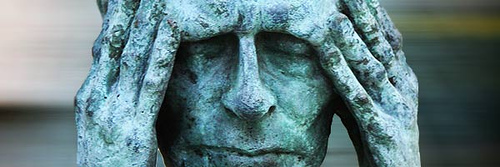
What Causes Headaches And What Can I Do About It?
Clear Lake Chiropractor Comments: “I woke up this morning with an excruciating headache. I thought the top of my head was going to blow off!” “I notice as the day goes on, tightness in my neck worsens and I get a headache usually by 2-3pm.” “I don’t know if I can do my work with my headaches.” “What causes headaches like this”?
These are common patient history entries we frequently receive at our clinic. Headaches are one of the most common complaints prompting patients to visit a health care provider. Many patients ask what causes headaches. The National Institutes of Health (NIH) describe the four types of headaches as vascular, muscular contraction or tension, traction and inflammatory.
What Causes Headaches in Common Forms of Headaches
The most common form of a vascular headache is migraine. Migraine sufferers usually complain of severe pain on one or both sides of the head, nausea or vomiting and sometimes visual changes. There is often a heightened sensitivity to light or noise prompting migraine sufferers to lie in a dark, quiet room until the migraine passes. Women are more likely to suffer from migraines than men and the severity of symptoms can be so extreme that all activity must be stopped until it passes.
The next most common type of vascular headache is the toxic headache produced by a fever. Other vascular headache types include “cluster” headaches, which are characterized by repeated episodes of intense pain that start in one spot and spread out from that spot. These may only last a few minutes to an hour but carry a very high level of pain and activity intolerance. Another common type of vascular headache is that resulting from high blood pressure.
Muscle contraction or tension headaches involve tightening of the facial and neck muscles. These often start in the neck and radiate over the top or to the sides of the head. The muscles in the neck are usually extremely tight and tender and often, moderate pressure applied with the finger or thumb to these muscles will prompt radiating pain into and/or over the top of the head. This can also result in significant activity intolerance but usually not as severe as migraine or cluster headaches.
Traction and inflammatory and what causes headaches result because of other conditions that range from a sinus infection to a stroke. These types of headaches can serve as a warning sign of a more significant or serious condition. Another example is meningitis as well as other conditions affecting the sinuses, spine, neck, ear, and teeth.
Preventative Treatment of Headaches
The NIH suggests, when headaches occur ≥3 times a month, that “… preventive treatment is usually recommended.” Certainly, in some cases, medication may be indicated but only after ruling out a more serious condition and after exhausting less invasive treatments that carry fewer side effects.
The American Chiropractic Association recommends: 1) avoid long time periods of staying in one position (computer, sewing machine, reading, etc.) and take stretching/neck range of motion exercise breaks every ½ to 1 hour; 2) Exercise – walking, low impact aerobics; 3) Avoid teeth clenching (due to straining the temporomandibular – TMJ, or jaw joint); 4) Drink lots of water – stay hydrated. These are some of the more common catalysts of what causes headaches.
Chiropractic care may include spinal manipulation (adjustments), nutritional advice (dietary suggestions, vitamin/mineral options such as a B complex), exercise, posture retraining, and relaxation techniques. If you, a family member or a friend require care, we sincerely appreciate the trust and confidence shown by choosing our service. If headaches are a problem, a trial of chiropractic makes sense prior to utilizing a more risk oriented headache treatment option? We look forward in serving you and your family.
Dr. Ward Beecher practices at Beecher Chiropractic Clinic at 1001 Pineloch, Ste 700 Houston, TX 77062. You can schedule an appointment at BeecherChiropractic.com or by calling (281) 286-1300. If you have any questions regarding this blog, please comment below!
Headaches and Posture
To download a copy of this week’s newsletter, please click here.
Houston Area Chiropractor Comments: Have you ever glanced at your reflection in a storefront window or mirror as you walked by and noticed your posture? Scary, isn’t it? We all know that we should stand up straight but we soon forget when we get busy and stop thinking about it.
Poor posture is often due to years of standing slouched and this bad “habit” usually starts at a young age. Just look around when you’re in an airport or shopping mall and notice the many people  have poor posture. In fact, people’s posture may reflect their attitude – if they’re happy, sad or depressed. Poor posture may be related to self-consciousness, especially during adolescence. It is also genetic as we frequently see a “trait” throughout family members with similar postural tendencies.
have poor posture. In fact, people’s posture may reflect their attitude – if they’re happy, sad or depressed. Poor posture may be related to self-consciousness, especially during adolescence. It is also genetic as we frequently see a “trait” throughout family members with similar postural tendencies.
The most common postural fault associated with headaches is the forward based head and shoulders. From the side, it appears that the head is significantly forward relative to the shoulders, the upper back is rounded forward and the shoulders are rolled forwards and rotated inward. One exercise that helps reduce this postural bad habit is tucking in the chin and pretending a book is balancing on top of the head. The objective is to not allow the book to slide forward off your head and land on your toes!
It takes approximately 3 months of CONSTANT self-reminding before the new “good habit” posture becomes automatic, so be patient. Soon you’ll “catch yourself doing it right” without thinking about it.
Frequently, posture is faulty lower down the “kinetic chain.” The first link of the chain is the feet and the last link is the head. Since we stand on two feet, any change in that first link or the feet, can alter the rest of the chain, especially areas furthest away – the head, resulting in headaches. For example, if one leg is short, the pelvis drops, the spine shifts (scoliosis), the shoulder drops and the head shifts trying to keep the eyes level. A short leg usually needs to be managed with a heel lift, an arch support or combination of both to properly treat the headache patient.
Most health care providers EXCEPT Chiropractic Physicians typically ignore these issues. Chiropractic Doctors are specifically trained to analyze posture and correct it. You can depend on our clinic for up-to-date treatment approaches such as these.
Dr. Ward Beecher practices at Beecher Chiropractic Clinic at 1001 Pineloch, Ste 700 Houston, TX 77062. You can schedule an appointment at BeecherChiropractic.com or by calling (281) 286-1300. If you have any questions regarding this blog, please comment below!
Headaches and Different Management Options
To download a copy of this newsletter, please click here.
Houston Chiropractor Comments: Headaches are one of the more common conditions that enter the offices of primary care physicians, including chiropractors. The standard medical treatment revolves around the use of medications and/or injections. The standard chiropractic treatment approach includes manual therapies that may include spinal manipulation or adjustments, manual or mechanical cervical traction, mobilization techniques, trigger point therapy, physical agents or modalities such as electrical stimulation, ultrasound, etc., and nutritional counseling. While both approaches have their pros and cons, there are far less side effects associated with the chiropractic treatment option.
Headaches can generally be classified as primary or secondary. Primary Headaches include Migraine, Tension, and Cluster. Secondary headaches occur because another condition or injury is present such as after a car accident or slip and fall injury, due an infection, a sinus, jaw, and/or dental condition, a vascular injury such as stroke, a medication side effect, psychiatric disorder and others.
Treatment for patients with headaches is dependent on the cause. Choosing a type of health care service for the treatment of headache can be a difficult choice. When considering the use of complementary and alternative medical approaches available to patients with chronic tension-type headaches, a recent report revealed that 40% of 110 patients surveyed utilized some form of an alternative/complementary medical approach. The most frequently utilized was chiropractic (21.9%), followed by acupuncture (17.8%), and massage therapy (17.8%).
If you find yourself frequently utilizing over-the-counter medications such as an anti-inflammatory drugs (ibuprofen: Advil, Nuprin; Naprosyn such as Aleve) or Tylenol, it is probable that the chiropractic management approach will benefit your headache condition.
Frequently, in patients with headaches, the vertebrae in the upper neck lose their normal range of motion and the muscles in that region that attach to the base of the skull become overly tight and squeeze or compress the nerves that feed into the head. This results in radiating pain over the top or around the head, sometimes into the eyes. Chiropractic care can make it easier for you to move your head and neck forwards, back, rotate or twist, and side bend. This, in turn reduces the muscle tension and nerve pinching, which reduces headache pain.
Dr. Ward Beecher practices at Beecher Chiropractic Clinic at 1001 Pineloch, Ste 700 Houston, TX 77062. You can schedule an appointment at BeecherChiropractic.com or by calling (281) 286-1300. If you have any questions regarding this blog, please comment below!
Different Types of Headaches and Chiropractic Care
To download a copy of this week’s newsletter, please click here.
Clear Lake City Chiropractor Comments: Adults may experience many different kinds of headaches. A primary headache is a headache that is not a part of another disease process. Secondary headaches can come from a poor eyeglass prescription, diabetes, the flu, or even a brain tumor. The most common primary headaches are tension-type, migraine, and cervicogenic (from the neck).
Tension type headaches feel like a tight band around your head. Stress seems to aggravate them and women tend to get this type of headache more frequently. Females are also more affected by
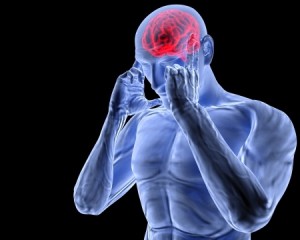
migraine headaches.
There are two types of migraine: classical and common. The classical migraine headache may start with nausea or sickness in the stomach and proceed to an intense throbbing pain on one side of the head. The common migraine lacks this nausea and is more common than the classical type.
In cervicogenic headache, neck function is prominently disturbed. In addition to neck pain, there are usually tight neck and shoulder muscles, and a limited range of motion.
Recent research has shown that the three above described headaches can also overlap with one another. In chiropractic, we look to the spine as an often-overlooked factor in headache treatment. By objectively analyzing spine function, the doctor will identify the joints that are restricted in their range of motion or show abnormal posture and alignment. Many patients on x-ray, or through external postural analysis from the side, can show forward head posture. This is where the neck seems to arise from the front of the chest rather than back over your shoulders. The head is very heavy and with this poor posture, the muscles at the back of the neck must contract to restrain this heavy load.
There isn’t one particular bone that is treated for these different types of headaches, the premise being that the headache is a symptom of another problem in the spine.
Chiropractic care has an excellent safety profile and several studies have shown that patents with headaches positively respond to chiropractic care without the side effects often seen with drug treatments. Chiropractic care is one of the most researched non-drug options available for patients. Unfortunately, many patients choose over-the-counter and prescription medications and don’t consider more natural approaches that may get at the cause of the condition rather than just its effects.
Dr. Ward Beecher practices his Houston Chiropractic Clinic at 1001 Pineloch, Ste 700 Houston, TX 77062. You can schedule an appointment by calling (281) 286-1300.
Do You Need Surgery for Your Headache?
To download a copy of this week’s newsletter, please click here.
Clear Lake Chiropractor Comments: I certainly hope not. Unless you’ve got a brain tumor, surgery is rarely an option considered by people with benign headaches. When I say benign, I mean not caused by cancer or some other
serious medical disorder. Benign headaches can, in fact, be quite disabling and completely disrupt a person’s quality of life. Work and exercise routines may add psychological or physical stress and make the headaches more acute, curtailing activities.

Although most headaches are treated conservatively, surgeons have recently begun to take an interest. Dr. Jansen of Germany reported on a group of 60 patients operated on for headache. They had headaches caused by neck problems, commonly called cervicogenic headaches. These types of headaches respond very well to chiropractic adjustments. In Dr. Jansen’s study, he reports removing the disks of C4, C5, and C6 levels in different patients. He analyzed the results over two years later and found that about 36-37% had deterioration of their condition. Although Dr. Jansen thinks surgery should be considered more often based on his case series, the lack of a control group makes his results suspect, modest as they are.
Surgery is really a very last step in the treatment palette patients should consider. Unfortunately, many patients consider only medications as options for headache management. Some patients will consume so much over the counter medication that their headache is actually aggravated by the heavy use of pain killer medications. Many of these patients will benefit from gradually weaning off of the drugs, if they are in fact medication induced.
The important thing is to first get your headache properly diagnosed because only then can a specific treatment be applied. What is somewhat underappreciated is how common spinal problems can cause head pain.
Cervicogenic and tension-type headaches can commonly result from whiplash trauma and other acceleration injuries of the head and neck. This type of trauma can sprain the cervical ligaments and disks, and cause tears in muscle fibers. Tension-type and cervicogenic headaches have been shown in randomized clinical trials to respond favorably to chiropractic adjustive care. These studies have also shown minimal side effects when compared to certain medications. This is especially true for tension-type medication treatments.
Dr. Ward Beecher practices at Beecher Chiropractic Clinic at 1001 Pineloch, Ste 700 Houston, TX 77062. You can schedule an appointment at BeecherChiropractic.com or by calling (281) 286-1300. If you have any questions regarding this blog, please comment below!
The Importance of Correctly Diagnosing Your Headache
To download a copy of this week’s newsletter, please click here.
Clear Lake Chiropractic Clinic Comments: All good doctors know the importance of getting an accurate diagnosis of a patient’s problem. But why is correctly diagnosing a headache so important? It’s important because without knowing what is the disease or injury, the treatment cannot be directed to the actual problem.
Unfortunately, when it comes to headaches, many patients do not receive an accurate diagnosis. If a patient were to see a doctor with a pain in the head and the doctor were to conclude that you have a pain in your head (headache), this tells little about the actual problem. In headache patients, we’ve become very good at labeling problems-giving them a name. If the headache comes and goes we call it episodic. If it occurs suddenly we call it acute, and if it occurs over many years we say it is chronic. But are these labels really helpful?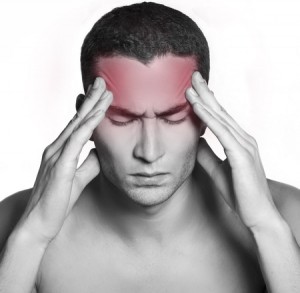
The reality is everyday people show up in doctors’ offices, obtain cursory examinations and walk out with a prescription for their head pain. Not all doctors do this, of course, but with the time constraints of managed care and the insurance company oversight, a doctor’s visit is just not what it used to be. When was the last time you had a house call from a doctor? Of course, the worst case is when a patient acts as their own doctor, sees an advertisement for a pill and does the diagnosing himself or herself!
In chiropractic, we may also label your headache as tension-type, migraine or chronic, but a good chiropractor will not stop there. The label does not give much of an indication of what needs to be done, and more importantly we still do not know the CAUSE of the pain. Clinical experience and research over many decades has shown that many headaches are actually caused by injuries to the neck and spine. But if a doctor does not examine the neck, they may not discover these hidden injuries. Sometimes an astute doctor will take a history and it may be discovered you had a whiplash or other neck trauma, months or even years earlier. This is important information to get at the cause.
We take a comprehensive approach to headache treatment at our clinic. A detailed history about the location, duration, and quality of pain is followed up by a thorough physical examination, especially of your spinal column. We may also order imaging tests such as x-rays to see the positions of the individual vertebrae in your neck.
The normal neck has a forward curve or arch, which keeps your head upright and directly above your shoulders. When this curve is lost, the patient’s head is thrust forward in the classic “bad posture” stance. Making sure your neck is both flexible, and in good postural alignment, is critical to maintaining good health.
Dr. Ward Beecher practices at Beecher Chiropractic Clinic at 1001 Pineloch, Ste 700 Houston, TX 77062. You can schedule an appointment at BeecherChiropractic.com or by calling (281) 286-1300. If you have any questions regarding this blog, please comment below!
Some Headache Causes and Solutions
To download a copy of this week’s newsletter, please click here.
Clear Lake City Chiropractor Comments: There are many people who frequently suffer from headaches, even on a daily basis. Many feel this is “normal.” In fact, when they come in for treatment, they may not even bring it up and only after asking if they have headaches, do they then discuss it, acting as if everyone has headaches. Others are completely debilitated and can’t go to work, drive a car, or even leave the house due to the intense pain and pressure, as if their head might explode.
When patients come to my office, I’ve found it is very important to take a very thorough health and family history. 
I find patients frequently tell me important clues to the cause of their headaches. For example, if one of my patients indicates that she has had headaches, as long as she could remember and the family history includes her mother having headaches that were debilitating and an MRI revealed that part of her brain stem extended down into the upper part of the neck, this would prompt an MRI of the patient which could reveal a similar finding. Another example is a patient with headaches that occur only at the time of one week prior to menstruation. This may lead to the trial of several nutritional vitamin / herbal approaches aimed at reducing fluid retention or build up that frequently occurs pre-menses. Other causes have included traumas from car accidents, slips and falls, sports injuries, and other activity related causes. In these cases, examination may lead to a diagnosis of abnormal biomechanics in the cervical spine and chiropractic treatment addressing these findings may prove very satisfying. Other causes may include stress and/or psychological conditions that required co-management with mental health practitioners and/or their primary care physicians. The combined efforts of medication and chiropractic treatments are most satisfying for these patients.
In general, the cause of headaches are usually multi-factorial and therefore, the most effective treatment is a multi-dimensional approach in which chiropractic treatment methods are, in most cases, the most important contribution to the successful management of headaches. Chiropractic treatment approaches include spinal manipulation, mobilization, muscle release techniques such as trigger point therapy, longitudinal and /or transverse friction massage, massage therapy, manual and/or instrumental traction, physical therapy modalities including ice/heat, electrical stimulation, ultrasound, low level laser therapy, diet and nutritional counseling, and stress management. Co-management needed for some patients can be arranged through this office and may include primary care physicians, physical medicine and rehabilitation physicians, pain management, rheumatology, internal medicine, neurology, physical therapy, as well as acupuncture.
Most important is that you feel confident that if you, your family or friends require treatment for headaches, our office will provide you with a comprehensive approach most likely to bring about a very satisfying outcome or result.
Dr. Ward Beecher practices at Beecher Chiropractic Clinic at 1001 Pineloch, Ste 700 Houston, TX 77062. You can schedule an appointment at BeecherChiropractic.com or by calling (281) 286-1300. If you have any questions regarding this blog, please comment below!

